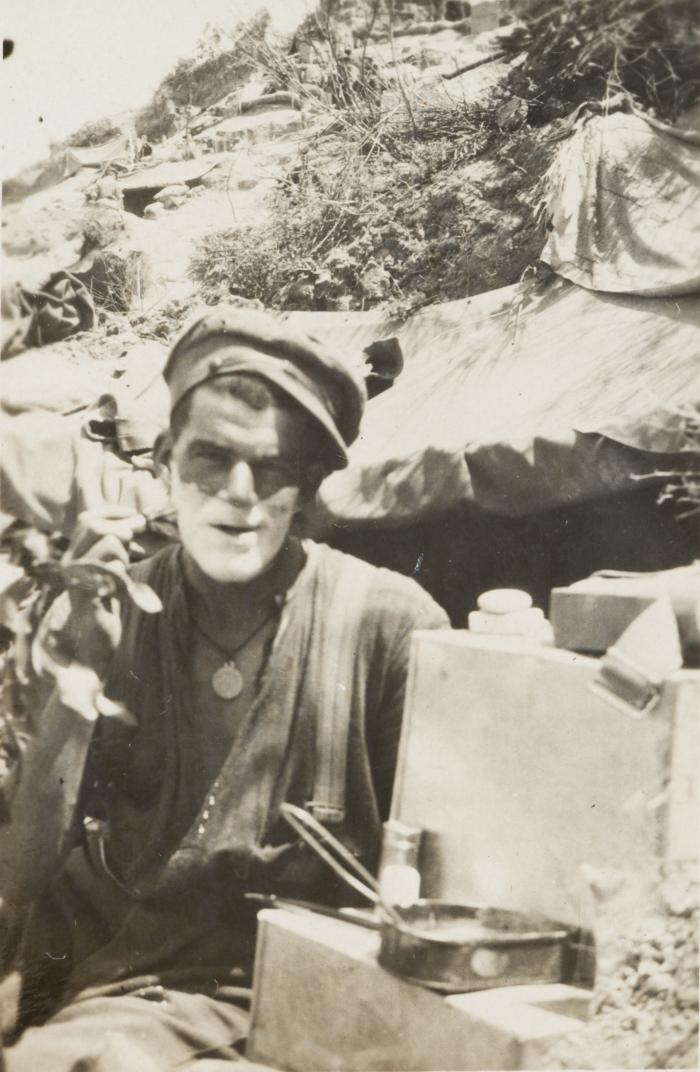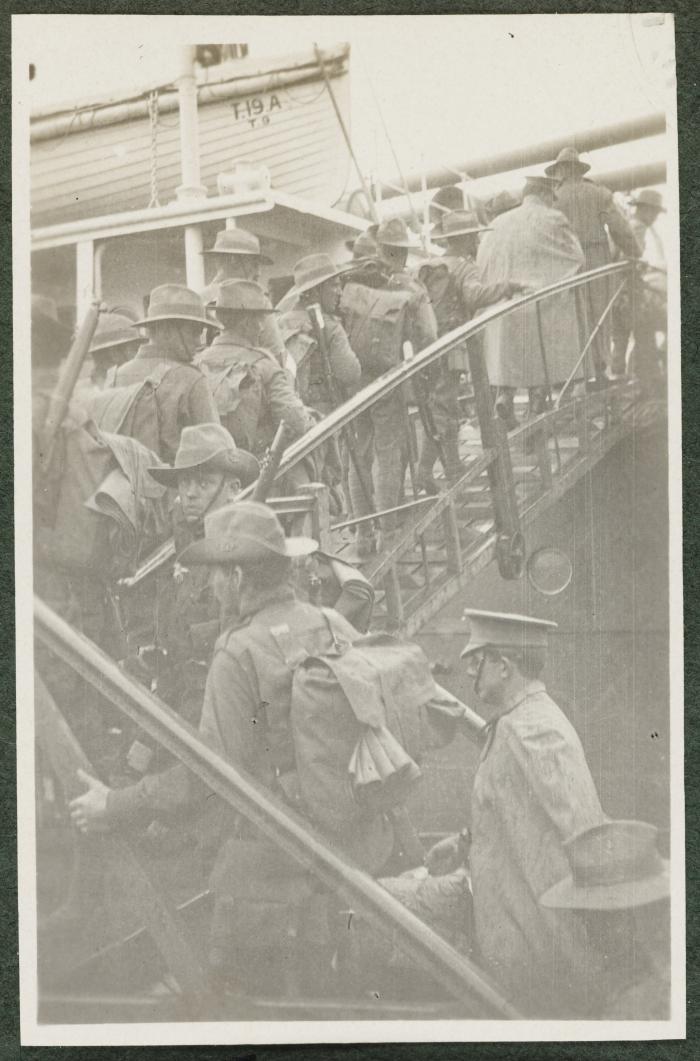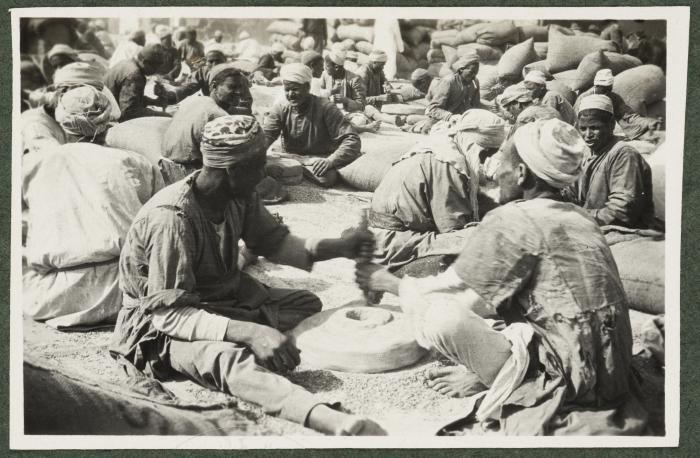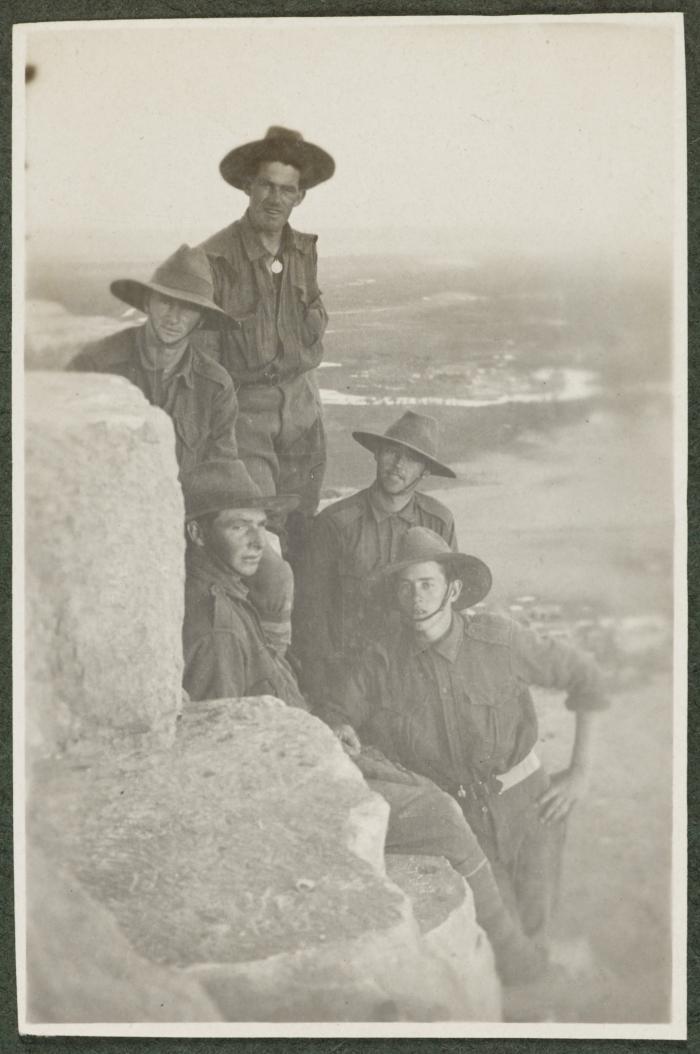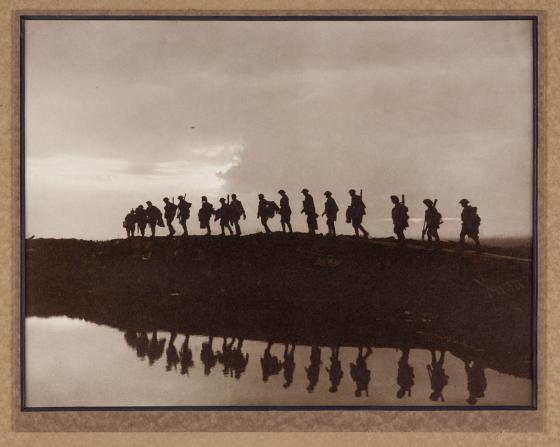Marshall was 24 years old when he enlisted in August 1914. He was one of the early enlistments, his service number was ‘577'.
Instead of writing a diary, Henry captured his new life of soldiering in detail through his camera lens. Henry took photographs of his friends at the training camp at Kensington, but he also had friends photograph him. Henry features in a number of photographs throughout the album. Each time he appears, he captions himself ‘577’.
He is shown in the album modelling his soldier’s kit before departing for Gallipoli and life in and around Cairo. Henry liked to document every facet of a soldier’s experience, including training and marching in the Egyptian desert, photographing his friends climbing the pyramids and surviving in the trenches at Gallipoli.
Marshall documented the friendships between the men and the social side of soldiering. On Christmas Day 1914, the boys visited the town of Heliopolis, playing tourist. Marshall was photographed wearing a jaunty fez. In Mena camp, Henry photographed his work of developing his photographic films, which were bound in frames, leaning against some rocks.
Henry created his first album of photographs which document his soldiering, titled; From Kensington, Sydney to Cairo. He wrote captions for 356 photographs. The remaining 167 images, which include arriving at Gallipoli and his last days fighting on the Peninsula, are not captioned. The last photograph of himself shows him sitting in his dugout, shaving. He was documenting life, right up to the end.
On the Gallipoli Peninsula
In the early morning hours on 5th of June, Henry was a member of a raiding party ordered to capture a machine gun from a section of Turkish trenches on the Gallipoli Peninsula. During the raid, Henry received a wound to his leg and a more serious wound to his chest. He was evacuated out by stretcher-bearers. He lasted five more days.
Henry died on the hospital ship Sicilia of wounds on 10th of June, somewhere between Gallipoli and Malta. He was buried at sea.
Amongst his personal effects mailed back to his family in Tasmania was a brown paper parcel containing a photograph album, camera film and three printing frames.
Elise Edmonds, Senior Curator, Research & Discovery
Collections and References:
Kensington to Cairo and from Cairo to Gallipoli: album of photographs, 1914-1915, PXA 1861

